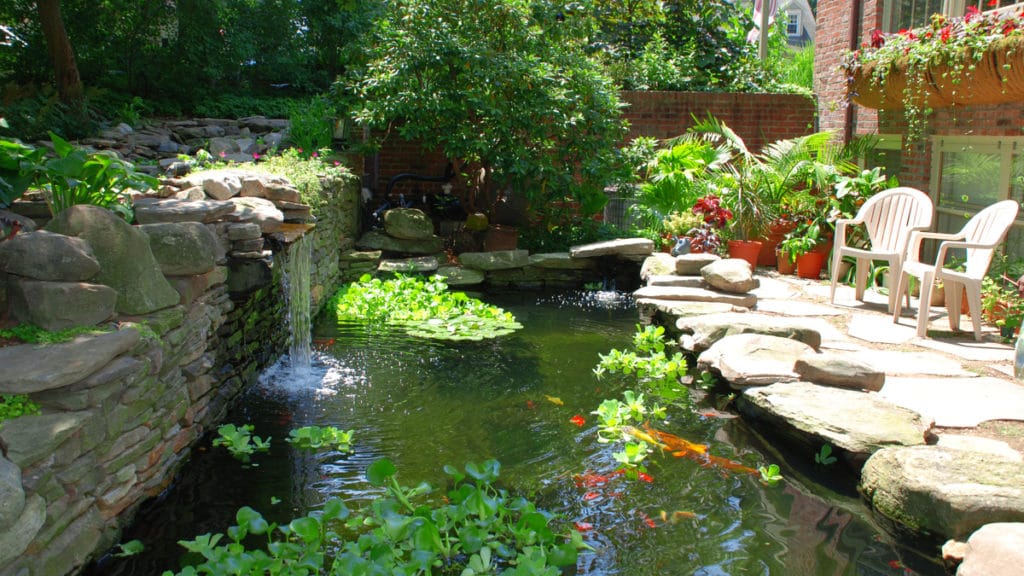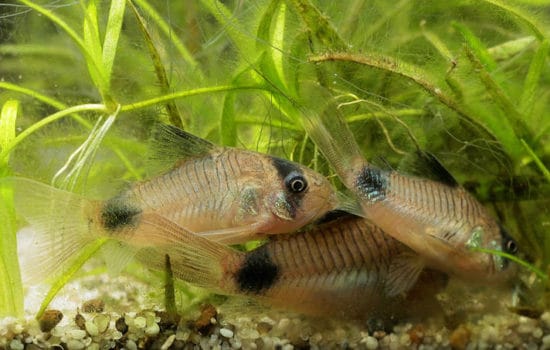Q.
We are thinking of building a large pond — about a half acre in size. We want a natural pond heavily planted with water lilies, lotus and the like. Although we plan to stock the pond with just a few koi, what we’re really interested in is attracting local wildlife, especially waterfowl that migrate through our area.
We’re not sure if there are pond liners that large or not, but we’d prefer a natural pond bottom. In past columns you have talked about natural (garden) ponds, but have always referred to using liners to hold the water. How can we build a natural pond with soil materials?
A.
A half-acre pond would be equivalent to a circular pond about 170 feet in diameter or, in a more natural shape, about 220 feet long by 100 feet wide. There are several options for constructing a new pond without a liner or cement shell. The easiest is to excavate the pond into the local water table and use the ground water. However, for this to work well you must live in an area with a fairly stable high water table.
When ground water is within a few feet of the ground surface, gradients into the pond from the edge can be shallow. But if ground water is 10 feet below the surface, the pond will look more like a quarry, with dangerously steep sides.
Even if the groundwater is near the surface this approach may still be inappropriate. Ground water elevations tend to fluctuate significantly during the course of a year. This fluctuation may be several feet or several dozen feet, with high water levels in spring, fall, and winter, but very low levels in the summer. The result is that the excavated pond would go dry for several weeks (or months) of the year. Fish would not enjoy this.
There are natural wetland features that provide precisely this type of habitat: prairie potholes and vernal pools. Across the Midwest these ephemeral ponds offer invaluable habitat for migrating waterfowl and indigenous animals. These ecologically significant wetlands are disappearing rapidly, so a project that would create a constructed prairie pothole would offer a great service. However, keep in mind that these temporary ponds do not harbor fish, so your plans for koi would be out, as would floating-leaf aquatic plants. Instead, your planting scheme would have to be built around local emergent vegetation.
If you want a permanent pond, there are really three basic options: 1) excavation into local impermeable soils–with compacting, 2) clay liners or 3) bentonite or chemical additives. Soil conditions vary substantially around the country. In some areas the soil has a heavy clay component. At minimum clay should comprise at least 10 percent of the soil mixture–substantially higher percentages are desirable. I strongly suggest having a professional soil analysis done.
If the soil proves satisfactory, the next step is to remove all vegetation from the area and dig the pond. I recommend that pond depth be kept to less than 10 feet in order to minimize the chances of seepage. More than 10 feet of static head pressure can push water through the pond floor and walls. When planning the excavation, add about 30 inches to the depth to compensate for the planting soil added later. This material will also protect the pond against cracking that might result from freezing and thawing.
The soil that will become the pond floor and walls should be turned to a depth of at least 12 inches and all rocks, stones, roots and so on removed. Then this soil is compacted to a depth of about 8 inches.
The impermeability of the compacted soil will be destroyed if you plant it. Aquatic plant roots, which can reach 2 feet into the soil, will create channels for water to seep out. Therefore, you will want to add at least 30 inches of a loam and clay planting soil when the pond sculpting is completed.
If your local soils do not have a good clay base, you can follow the ancient Chinese pond building technique of adding a clay layer. A 12-inch clay layer (coarse soil with at least 20 percent clay content) is spread over the pond floor and walls. Keep in mind that the excavation depth should be the sum of the desired pond depth, plus 12 inches for the clay, plus 30 inches for the planting soil.
The ground should be prepared as described above for compacting, and the clay should be applied in 6-inch layers, compacting the first before applying the second. Finally, add the 30-inch planting soil layer.
The third alternative is to use a soil additive, such as bentonite, to create an impermeable layer. Bentonite is a clay colloid that expands to 10 times or more its volume when wet. This expansion seals pores in the soil. Whether or not your soils can be sealed this way depends on a number of characteristics that can only be determined by professional soil analysis.
In appropriate soils 10 to 30 pounds of bentonite are applied per square yard of surface area. The additive is mixed with the soil (after it is prepared by removing all debris, stones, etc.), then compacted. Adding the planting soil is the last step for filling the pond.
Pond liners are available for ponds the size you are considering. Permalon (Reef Industries, Houston, TX), for example, can be placed and sealed to cover your half-acre area. A 6-inch gravel base and then planting soil can be laid over it. The company claims that heavy equipment can be used on top of their liners to move gravel and soil without damage.
Posted by: Chewy Editorial
Featured Image: via Lisa Ewing/Shutterstock
Share:









